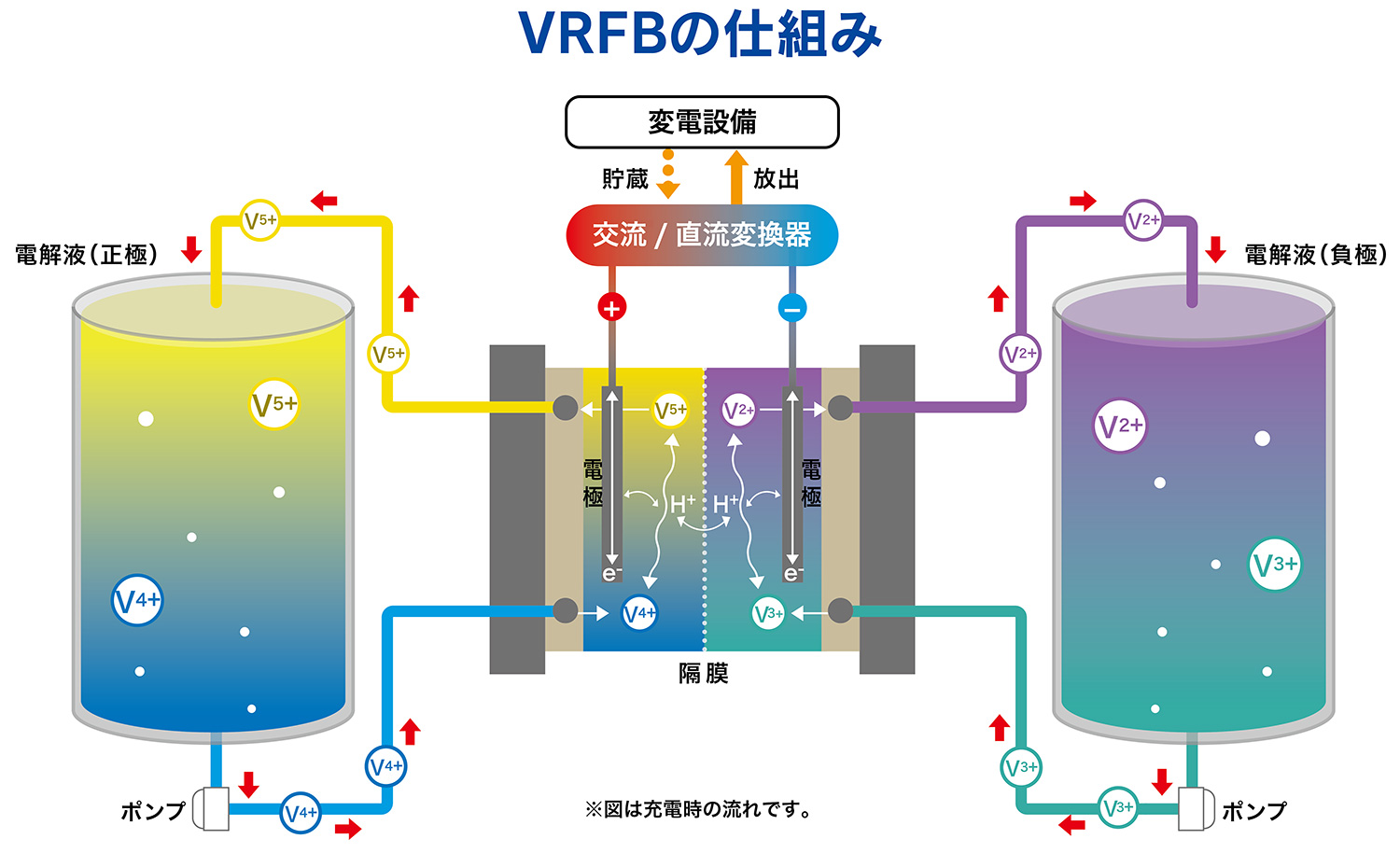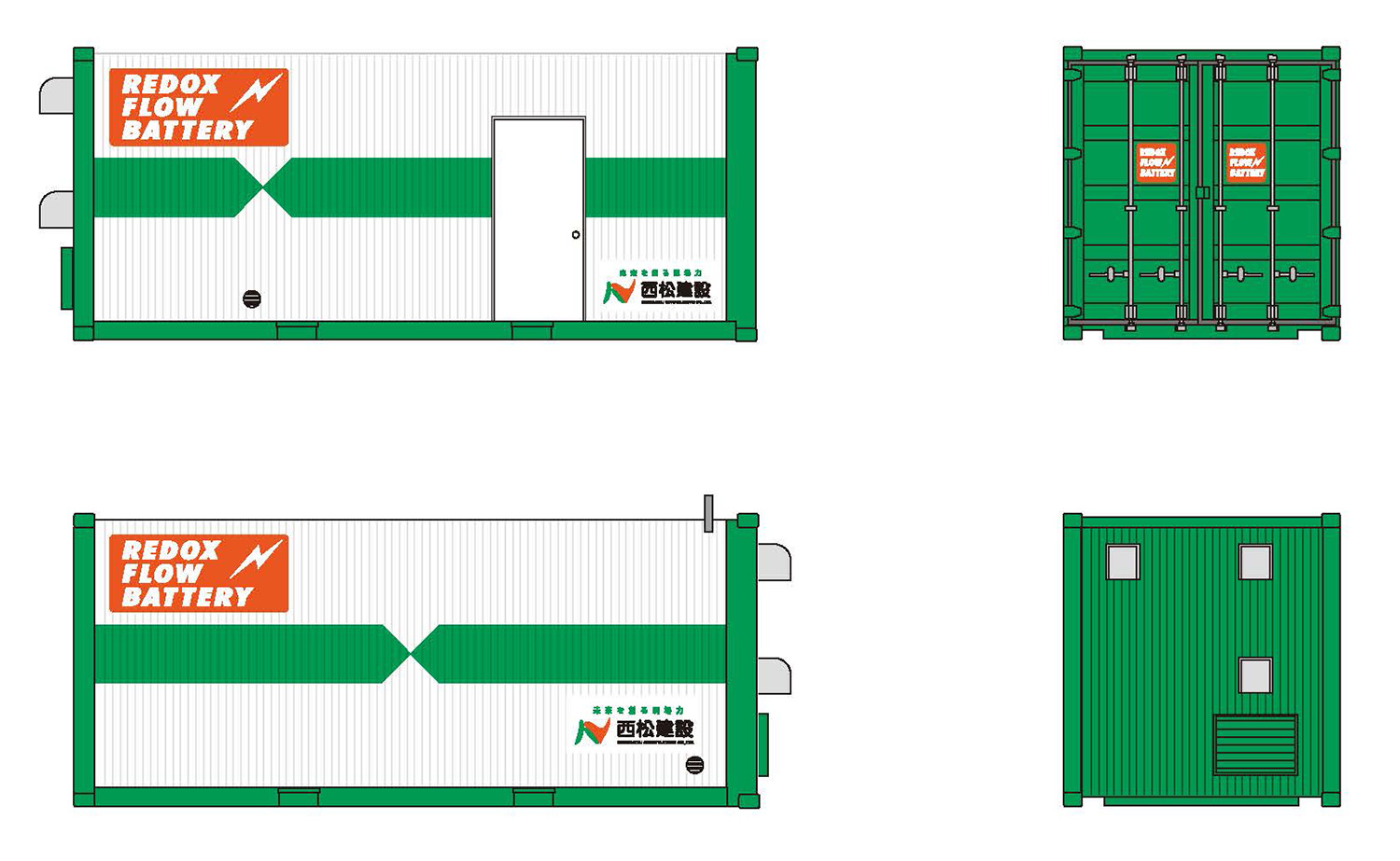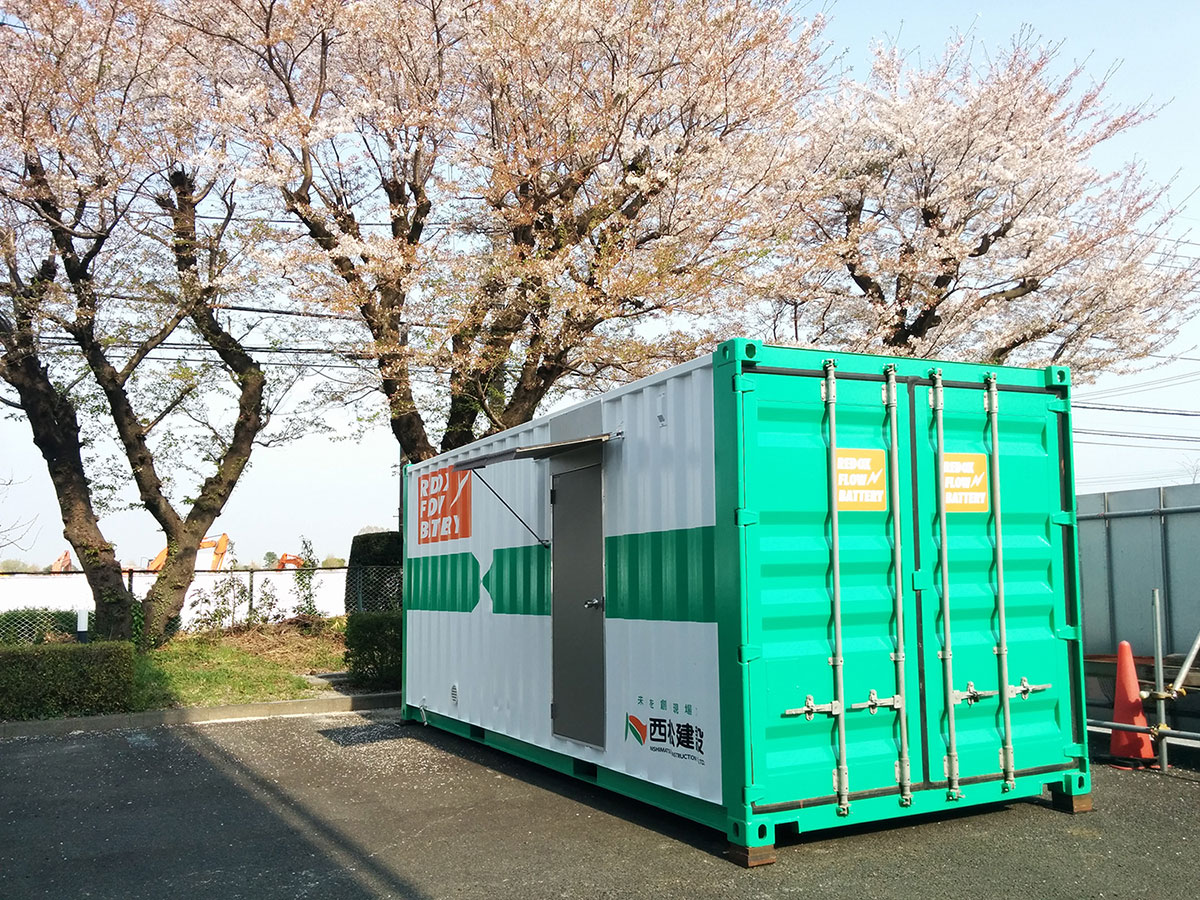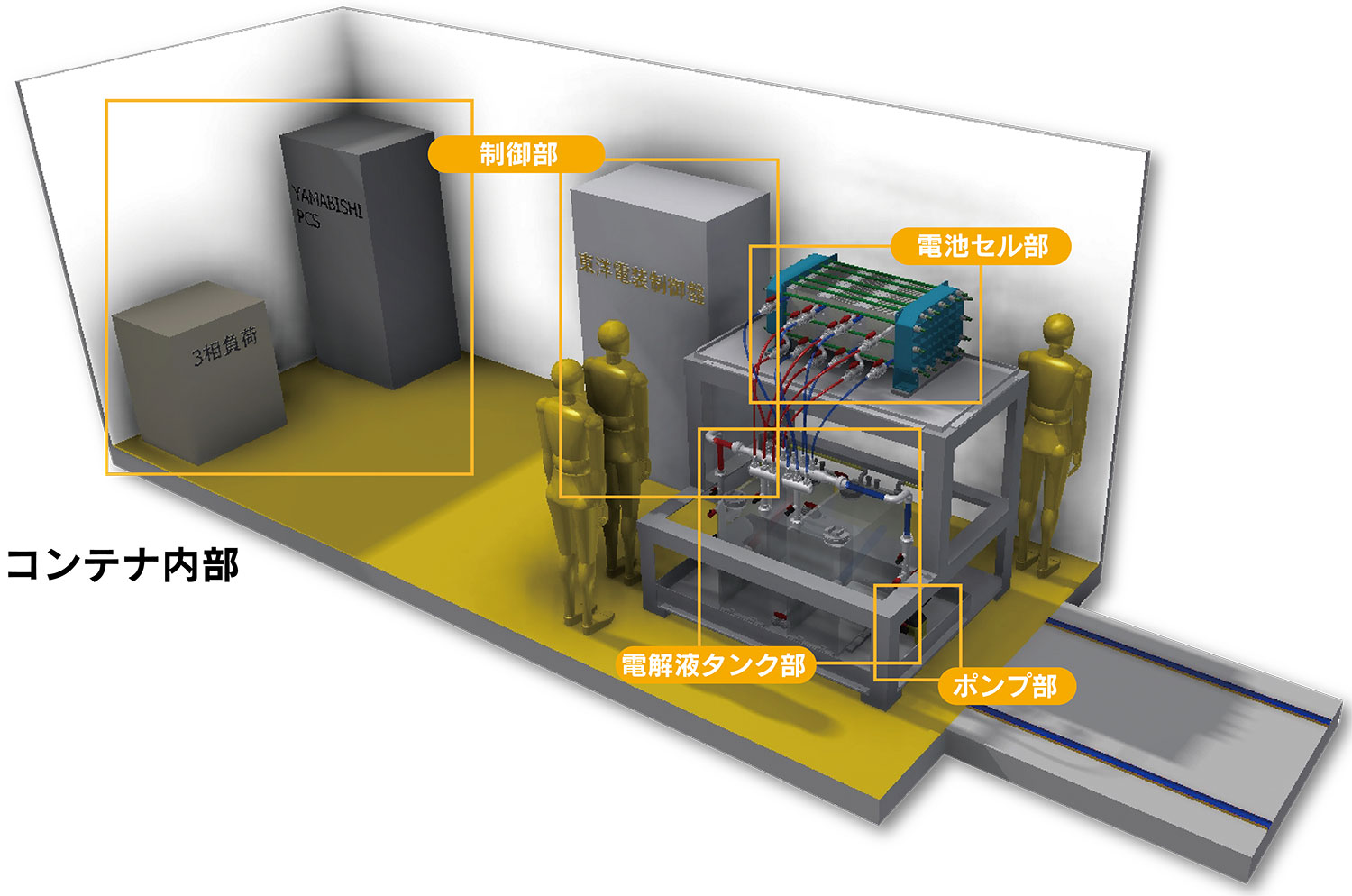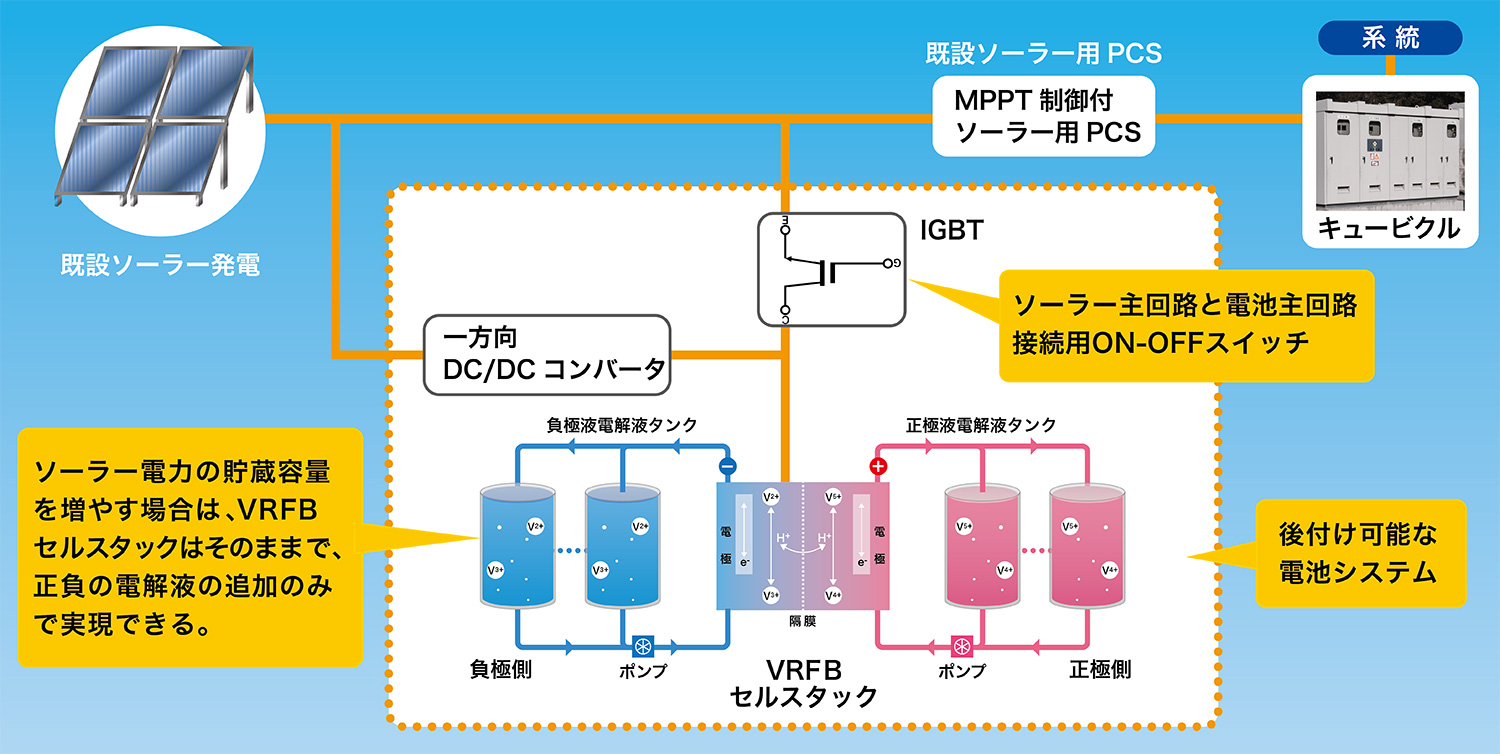Developing an energy storage system using a Vanadium Redox Flow Battery
NISHIMATSU CONSTRUCTION CO.,LTD.
Outline
Developing an energy storage system to maximize the use of renewable energy - Energy storage system using a highly safe and stable Vanadium Redox Flow Battery (hereinafter abbreviated as VRFB) -
In recent years, the intensification of recent weather disasters due to climate change has caused enormous human and economic damage, and the decarbonization in business activities has become indispensable as a corporate social responsibility. We have set a long-term vision of "reducing CO2 emissions from business activities to a net zero level by fiscal 2030'' in order to contribute to the prevention of global warming, and are promoting CO2 reduction activities and the technological development that contributes to CO2 reduction. One of these activities is the development of an energy storage system that contributes to the effective use of renewable energy.
Since the Paris Agreement in 2015, the active introduction of renewable energy power generation has been accelerating in Japan and overseas, but the amount of power generated by solar and wind power is affected by the weather, which makes it difficult to generate power stably, and the use of a storage battery is expected as a means of solving instability during power supply. At present, we are developing methods for evaluating the basic performance and controlling the storage battery in a test system for the VRFB ideal for absorbing short-period output fluctuations and long-term power storage. By applying this technology, a VRFB system that can be applied to the next-generation smart grid and virtual power plant (VPP) will be realized.
Description
In cooperation with LE SYSTEM Co., Ltd. (Head Office: Kurume City, Fukuoka, Japan, President: Junichi Sato), we have developed an energy storage system to maximize the use of renewable energy such as the solar power generation, and have just started the demonstration test.
1. Background
Among the renewable energies, solar and wind power have the disadvantage that it is difficult to control the amount of power generation because the amount depends on the weather. The storage battery is expected to be a device that solves such instability of renewable energy. For the storage battery, studies are underway to reduce the size and increase the capacity, and we have been focusing on VRFB, which has relatively high safety among storage batteries, which is suitable for absorbing fluctuations in renewable energy and increasing the capacity, and which operates stably for a long period of time.
2. Features of our newly developed energy storage system
The newly developed power storage system has the following features.
(1) Realization of "safety," " stability" and "expandability" by adopting the VRFB battery
1) High safety
The electrolyte is nonflammable, and the battery operates at room temperature, so there is no danger of fire or explosion.
2) Long-term stability
Since there is no need to take measures such as heat resistance, the life of the battery body is long, and a battery design of approximately 20 years is said to be possible. In addition, other storage batteries have a limited number of times of charge/discharge, while VRFB has an unlimited number of times of charge/discharge, and the electrolyte can be used semi-permanently, so it is considered possible to reduce costs after 20 years and beyond.
3) High expandability
The storage capacity is determined by the amount of electrolyte, so the storage capacity can be easily increased by adding more tanks.
(2) Easy installation and movement with unitization
The functions required for the storage battery, such as the control unit and battery cell unit, are integrated into a single container, which allows easy installation and movement. (Figure 1)
3. Overview of the demonstration test
For the development of VRFB, we conducted development experiments from April 2017 for two years. We confirmed that the energy storage performance that was the basis of the system could be secured, by evaluating the performance of repeated charging/discharging with a load applied in cooperation with the 3 kWh VRFB system and the existing solar power generation system in our technology research laboratory. At present, we have been demonstrating the storage efficiency, convenience, maintainability, and durability for commercialization since April 2019 by linking a 20 kWh VRFB system expanded to a practical-scale storage capacity and a solar power generation system with an output of 8 kW.
[Evaluation items]
(1) Confirmation of VRFB operation control
(2) Confirmation of VRFB overcurrent capability characteristics due to load fluctuation
(3) Confirmation of operation control related to fluctuation adjustment for the fluctuating power generation amount of solar power
(4) Confirmation of various efficiencies of VRFB
4. Future development
We will contribute to the realization of a low-carbon society by repeatedly improving this system, establishing an energy storage system in accordance with the supply and demand of renewable energy, and building a regional decentralized energy system compatible with a smart grid society. (See Figure 2)
Partner(s)
LE SYSTEM Co., Ltd.
Similar Innovation Challenges
Accelarating the penetration of renewable energy resources with “Open Energy System”
Sony Group Corporation
Achieving net-zero carbon emissions from plant factories using full artificial lighting
Taikisha Ltd.
Advanced technology for buildings providing energy-saving and comfortable indoor environment (under Net Zero Energy condition)
Mitsubishi Electric Corporation
AI control reduces base station power consumption by up to 50%
KDDI CORPORATION



